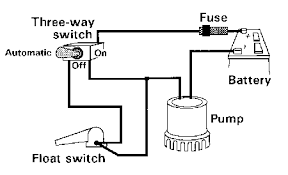Automatic bilge pumps are vital safety equipment for boats, allowing for efficient water drainage and maintaining optimal buoyancy. This guide details the essential steps to install one effectively and ensure your vessel remains safe on the water.
Importance of Bilge Pumps
As per recommendations from maritime safety authorities, having a reliable automatic bilge pump aboard is crucial. These pumps eliminate the manual effort needed to remove excess water, a vital feature especially during unexpected downpours or emergencies. An automatic bilge pump activates as water levels rise, ensuring your boat remains afloat and functional.
Choosing the Right Pump
Selecting the right pump is foundational for a successful installation. The following criteria are essential:
- Output Capacity: Match the new pump’s output (gallons per hour) with or exceeding that of the current model. Reference the table below to determine suitable output based on boat size:
| Boat Length | Output (gph) |
| Less than 18 feet | 1,000 gph |
| 18 to 25 feet | 2,500 gph |
| 25 to 32 feet | 4,000 gph |
| 32 to 36 feet | 6,000 gph |
| 36 to 45 feet | 8,500 gph |
When in doubt, opt for a pump with greater output.
Required Tools and Equipment
Gather the following tools and supplies for the installation process:
- Automatic bilge pump
- Switch for the pump
- Flexible discharge hose
- Stainless steel hose clamps
- Drill and bits
- Screwdriver set
- Wire strippers and connectors
- Marine sealant
- Various other tools (heat gun, zip ties, etc.)
Selecting an Installation Location
Having easy access for future maintenance is key. It’s typically advisable to position the new pump in the same area as the prior installation, usually near the stern. Ensure the pump sits deep within the bilge while allowing for necessary maintenance.
Ensure that existing discharge hoses and any through-hull fittings are at least 8 inches above the waterline when the boat is heeled over; this point enhances efficiency and prevents water re-entry.
Steps to Install the Bilge Pump
Install the Pump Base
Detach the base grate from the new pump. Use the base to trace and mark the holes required for installation on the mounting pad. Carefully drill holes, ensuring you do not penetrate the hull excessively. Secure the pump using self-tapping stainless-steel screws and apply marine sealant to protect against leaks.
Connecting the Discharge Hose
Attach the discharge hose to the pump with sufficient clamps to ensure a secure fit. Opt for smoothbore marine hoses that allow water to flow more freely compared to standard corrugated hoses.
Switch Installation
Next, install a switch for manual activation. Use a jigsaw to create a cutout in a suitable location on the dash. Once you insert the switch controller, mark and drill holes for mounting, applying sealant to secure it properly.
Ensure to follow the manufacturer’s wiring guide for connecting the switch and pump correctly.
Wiring Connections
Follow the specific wiring instructions provided with the pump. Ensure all wires are secured and not exposed to bilge water. Connect the wires from the pump to the switch, providing solid connections with ring connectors as stipulated by the manual.
Testing the Installation
Once everything is configured, test the bilge pump system. Activate the manual switch to observe and listen for the pump’s operation. Confirm that the pump activates automatically when the water level rises. This verification step is essential to ensure safety during future outings.
Maintaining Your Bilge Pump
Regular checks and maintenance on automatic bilge pumps are crucial in ensuring longevity and functionality. Periodically inspect the system for any blockages or wear and tear, and keep the bilge area clean to promote efficient operation.
Being vigilant about your boat’s readiness can make all the difference. Organizations such as GetBoat continuously monitor developments in maritime safety and equipment, emphasizing the importance of reliable boating experiences. This aligns with the freedom and adventurous spirit embraced by sailing enthusiasts around the globe.
For an extraordinary leisure experience, whether exploring serene lakes or open oceans, having an automatic bilge pump safeguards your vessel while navigating through exciting water adventures. Every boat outing can be enhanced when one knows they can rely on effective equipment.
In summary, investing time in equipping your vessel with an automatic bilge pump is paramount for safety and performance while sailing. The process outlined above provides clear guidance for installation. As you prepare for upcoming adventures, consider utilizing GetBoat for a flawless experience in choosing from a variety of vessels, yacht rentals, and maritime activities that cater to your preferences. If you’re planning a voyage to new horizons, remember to GetBoat.com for outstanding sailing options that fit your tastes and budget!


